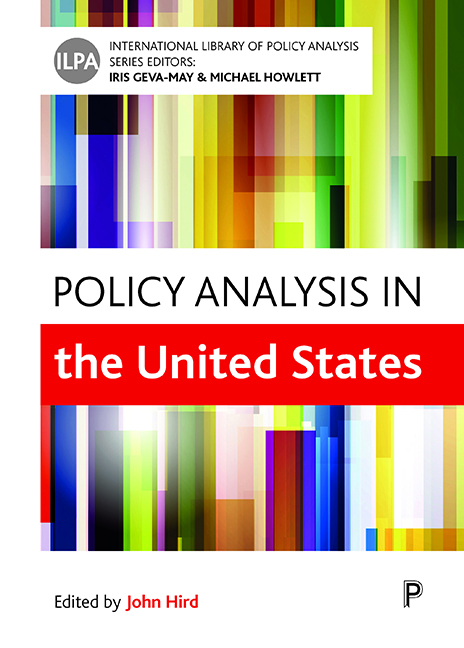Book contents
- Frontmatter
- Contents
- List of tables and figures
- Notes on contributors
- Editors’ introduction to the series
- Introduction
- Part One History, styles, and methods of policy analysis in the United States
- Part Two Policy analysis by governments
- Part Three Policy analysis outside of government
- Part Four Policy analysis education and impact internationally
- Index
Six - Policy analysis in the states
Published online by Cambridge University Press: 12 April 2022
- Frontmatter
- Contents
- List of tables and figures
- Notes on contributors
- Editors’ introduction to the series
- Introduction
- Part One History, styles, and methods of policy analysis in the United States
- Part Two Policy analysis by governments
- Part Three Policy analysis outside of government
- Part Four Policy analysis education and impact internationally
- Index
Summary
Most assessments of policy analysis in the United States focus on the federal government and mention activity in the 50 American states only in passing. This oversight is unfortunate as a large volume of policy analysis occurs at the state level, both within these governments and by a wide range of nonprofit and private organizations including think tanks, research institutes, and advocacy organizations. This activity supports the high volume of innovation that occurs at the state level, a portion of which is subsequently adopted at the federal level.
States have been called, with good reason, ‘laboratories of democracy’ (Osborne 1990). For example, Minnesota was the first state to authorize charter schools, which since have been authorized across the country. In 2006 Massachusetts developed a universal health insurance program that served as the model for ‘Obamacare’—the 2010 federal Affordable Care Act. More recently, in 2010, Wyoming became the first state to require energy companies to identify the chemicals used in hydraulic fracturing drilling (fracking), California and other western states have established a cap-and-trade system to reduce carbon emissions, Wisconsin has eliminated collective bargaining rights for most of its public employees, and Kansas has enacted major income tax cuts in the hopes of spurring economic growth (California Environmental Regulation Agency 2015; Samuels 2015; Vockrodt 2015; Moncrief and Squire 2013). Whether one supports or opposes such actions, it cannot be argued that these innovations by states have been inconsequential. Given the ongoing political gridlock at the federal level, states and other sub-national governments are likely to continue to be the drivers of policy innovation in the United States for the foreseeable future. Neglecting the state-level policy analysis that often supports such activity would thus provide a limited and misleading view of the field.
The history of policy analysis within the states has been greatly shaped by the institutional changes that have occurred within these governments over the past 50 years (see the chapter by Lynn in this volume.) Given the diversity among the states, it is not surprising that their policy analysis organizations and activities also vary widely. While state-level policy analysis has grown rapidly, it has also fragmented, and many policy analysis organizations face important challenges. This chapter discusses these trends and the potential future of policy analysis in the states.
- Type
- Chapter
- Information
- Policy Analysis in the United States , pp. 113 - 130Publisher: Bristol University PressPrint publication year: 2018



